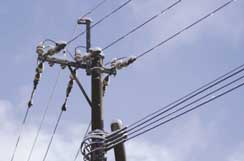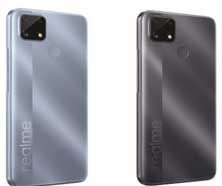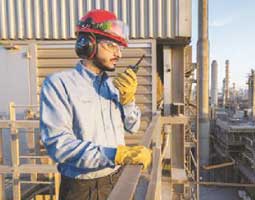Consumer electronics: New innovations to level up electro-technology
High-performance electro-technology solutions are on the rise, in a world where speed, efficiency, and dependability are key benchmarks. These new innovations provide manufacturers with options for meeting consumer demand while emphasising product safety and longevity of service life, adds Angelica Buan in this report.
When it comes to cutting-edge electronic gadgets with high-performing functionalities, customers are not leaving shopping carts empty. And it’s not for the reasons we may think. The days of owning gadgets as a status symbol or buying the most recent gizmo to keep up with the Joneses are long gone.
In today’s fast-paced world, consumer electronics have become indispensable to consumers everywhere. With electronic devices, we are able to communicate, interact, plan our daily lives, and get our fix of entertainment.
Nonetheless, today’s consumers also expect a more robust user experience. Thus, market players are investing in R&D to introduce new advanced engineering materials and specialised grade compounds with properties that meet the performance, functionality, safety, and long service life requirements of consumers.
Low smoke solution for fibre optics application
Cables and wires, which are the vital arteries of electronic devices and electrical conduits, are prone to fire hazards. Used for cable jacketing in the wire and cable industry, low smoke-free halogen materials are thermoplastic or thermoset compounds that emit limited smoke and no halogen when subjected to heat or exposed to fire
These flame retardant (FR) compounds address consumer concerns about fire safety and toxicity, as well as the growing demand for FR plastics in the construction, electrical and electronics, and transportation sectors, and government fire safety regulations.
Traditional materials like polyvinyl chloride (PVC) and fluorinated ethylene propylene emit less dense smoke and hardly any highly toxic gases called halogens. Thus, halogen-free, low-smoke cable cables are used in a variety of applications, including poorly ventilated areas and other potentially dangerous environments.
US manufacturer of specialised polymer materials Avient, formerly known as Polyone, has launched its new ECCOH LSFOH (low smoke and fume, zero halogen) grades for industrial and telecom cables, which fulfil the performance requirements of fibre optics, telecommunications infrastructure, and the new IEC 60794-6 standard.

Its latest offering, ECCOH 5565 and ECCOH 5978 UV, two new cable jacketing formulations, help extend the life of cables, it said.
Withstanding up to 20,000 flex fatigue cycles, ECCOH 5565 has flexibility and environmental stress cracking resistance (ESCR), making it ideal for power and control cables in industrial machinery, heating and air-conditioning systems, and plant engineering systems, where flex resistance is required during installation or use.
It also has good temperature resistance, operating over a wide temperature range of minus 40-80°C, as well as water absorption resistance. This makes it suitable for use in dry optical fibre cable applications or where additional cold resistance is required, such as indoor and outdoor duct cable applications, powerto-the-antennas, or 5G hybrid cables.
High flame retardancy and good char forming properties are combined with a high ESCR in ECCOH 5978 UV formulations. This makes them more effective in aerial drop cables, which are frequently subjected to constant stress from the clamps that keep them in place. This formulation can be used on direct buried cables and other duct or indoor applications that require extra flame and low dripping performance, as well as where cable fixations and movements put extra stress on the cable jacket.
Safety standards compliance with FR resins

With the implementation of safety standards, substandard electronic products are being pushed out of the market. This is beneficial to consumers. As well, with the implementation of the International Electrotechnical Commission’s new IEC 62368-1 consumer electronics safety standard, many manufacturers are looking for higher- performing FR materials.
Chinese smartphone manufacturer Realme has chosen chemical company Sabic’s new LNP Elcres EXL7414 copolymer resin for the battery enclosure of its C25 phone to achieve UL 94 V0 FR compliance at 0.6 mm, as required by the new IEC standard. The C25 phone was designed to be thin (9.6 mm) and light (209 g).
Furthermore, the new LNP copolymer resin’s flame retardance supports its potential use in ultra-thin-wall components, which could help save device weight and space in ever- thinner designs. The LNP copolymer resin also has good flow for thin-wall moulding, ductility to resist drop damage, and chemical resistance to withstand UV-cured painting.

Realme created an ultra-thin-wall battery cover to reduce product weight and maximise space for internal components while still adhering to the IEC standard.
It was the first consumer electronics company to use Sabic’s FR resin, a PC-based copolymer material that replaces standard PC while providing improved FR capability defined as UL 94 V0 at 0.6mm. LNP Elcres EXL7414 resin uses a non-chlorinated, non- brominated FR formulation as part of its safety value.
Sabic has also introduced LNP Stat-Kon and LNP Stat-Loy compounds, with enhanced anti-static performance for applications regulated under the EU’s increasingly stringent ATEX directive governing equipment used in explosive atmospheres. The new technologies can potentially replace less-effective metals and coated or filled polymers in electronics enclosures, automation equipment, equipment housings, lighting fixtures, safety gear and hand-held devices such as flashlights.
The two new products are based on Sabic’s LNP copolymers technology. Stat-Kon compound is said to be an advanced material that provides exceptional electrostatic discharge (ESD) protection while retaining impact resistance to safeguard sensitive electronics and offers processing ease.
Meanwhile, Stat-Loy D3000IEU6 compound is a colourable product that offers opportunities to reduce costly secondary painting operations and also adding aesthetics as previously ATEX applications were mainly in black.
(IMA)Subscribe to Get the Latest Updates from IMA Please click here
©2021 Injection Moulding Asia. All rights reserved.













